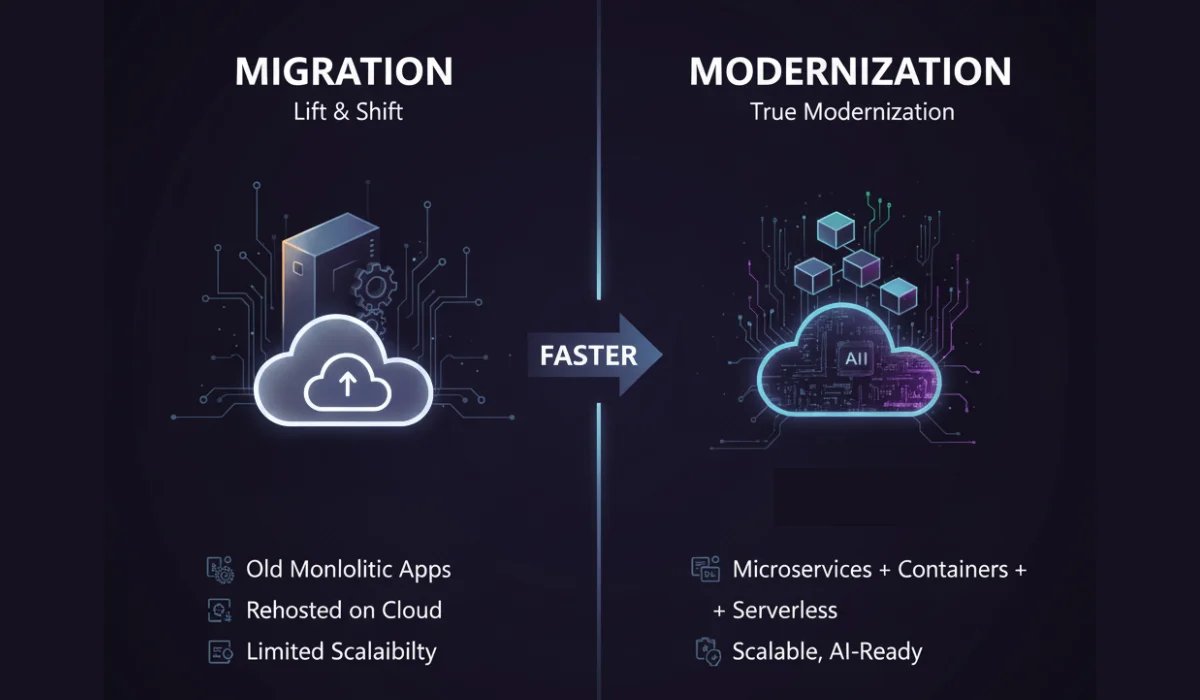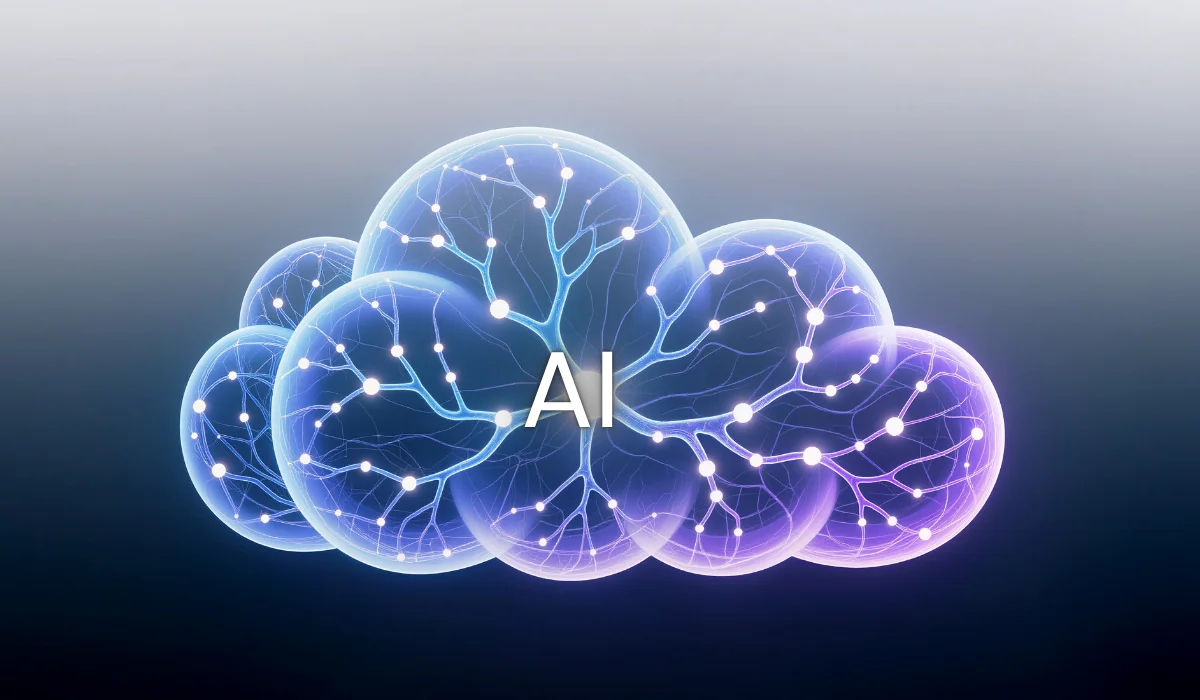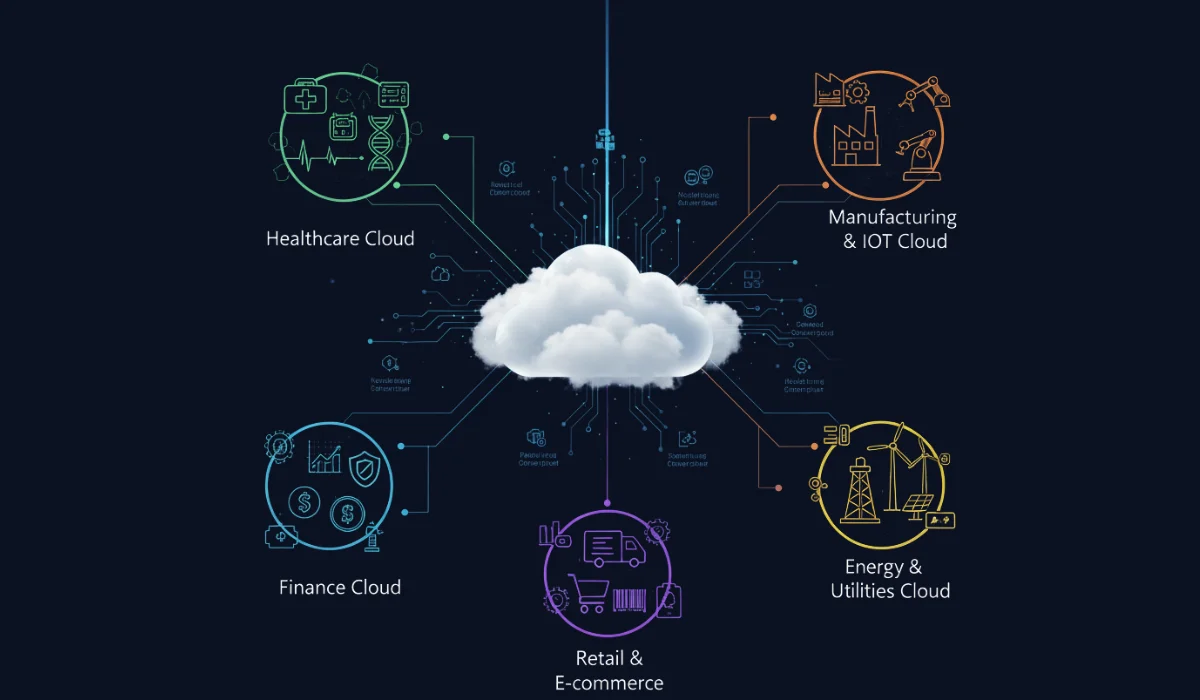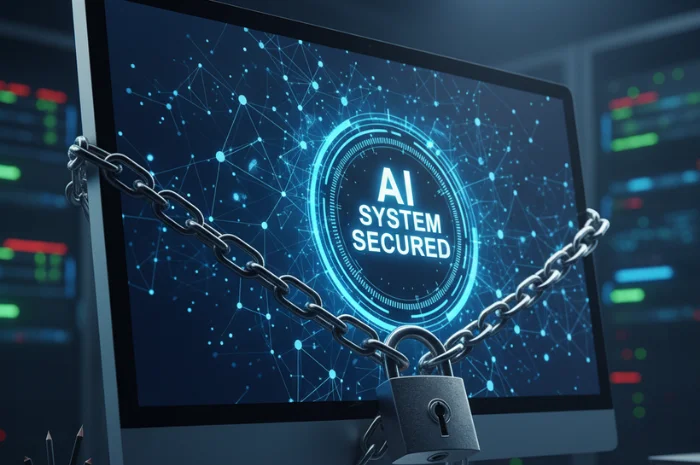In the early days of cloud computing, the goal was simple: get your company off its physical servers and onto the cloud. Cloud consultants focused mostly on “lift and shift”, moving existing applications without changing them. If the move succeeded, you won.
That time is over.
Today, nearly every major business is in the cloud, but many are not getting the value they expected. The focus has moved completely from moving applications to making them better, cheaper, and smarter.
For businesses looking for a real competitive edge, understanding these key trends of cloud consulting is vital. They show not only what services you should buy but also how your business should think about its digital future.
Why Cloud Consulting is Changing: The Challenge of Managing What You Built

The main reason the consulting world is changing is simple: Getting to the cloud isn’t the challenge anymore; managing the complex environment you’ve created is.
Businesses often use multiple cloud providers like Amazon Web Services (AWS) for infrastructure, Microsoft Azure for office tools, and Google Cloud Platform (GCP) for specialized AI. This approach creates what experts call “cloud complexity.”
This complexity leads to major problems:
- Higher Costs: Bills are often surprisingly high, hard to understand, and lack clear rules on spending.
- Too Many Platforms: It’s tough and error-prone to manage security, tools, and staff skills across two or three different cloud platforms.
According to Flexera’s 2024 State of the Cloud Report, 89% of organisations reported a multi-cloud strategy (up from 87% previously), and their top challenge is managing cloud spend.
Because of this, the role of the cloud consultant has changed completely. It has moved from migration work to sophisticated, long-term partnerships focused on three core areas: strategy, optimization, and FinOps (Financial Operations).
Trend 1: The Shift from Migration to True Modernization

The old “lift and shift” method is out. Simply moving an outdated application to the cloud without redesigning it, is a waste. It doesn’t use the real benefits of cloud computing.
Today’s top cloud consulting companies are guiding clients through true cloud modernization. This means taking apart old, large, and rigid applications and rebuilding them with modern, cloud-native technologies.
Here’s how Softude helps enterprises:
Instead of stopping at migration, Softude re-architects applications for the cloud era, combining deep domain expertise with modern engineering practices. The focus isn’t just where your workloads run, but how they evolve once they’re there.
Our modernization approach includes:
- Microservices architecture: Breaking monolithic systems into modular, independent components that scale and deploy faster.
- Containerization with Kubernetes: Ensuring consistency and portability across hybrid or multi-cloud environments.
- Serverless computing: Enabling faster innovation by letting teams focus purely on code and business logic, not infrastructure.
- AI-readiness: Designing systems that can easily integrate data pipelines, ML models, and intelligent automation in the future.
In short, Softude helps clients build future-ready digital foundations, cloud systems that are agile, resilient, and continuously adaptable, not just migrated and maintained.
Trend 2: Multi-Cloud and Hybrid are the Standard
The fear of being stuck with one technology company (vendor lock-in) is real. The need for specialized tools (like powerful GPUs for machine learning) means that most large organizations now use multi-cloud and hybrid cloud models.
- Multi-Cloud: Using two or more public clouds (e.g., running your finance data on Azure and your customer portal on AWS).
- Hybrid Cloud: Using a public cloud combined with your own private data center.
This landscape means consultants focus less on a single platform and more on unifying these different environments. This includes:
- Clear Rules: Creating governance frameworks that define what runs where, why, and how access is controlled across all platforms.
- Connecting Platforms: Making sure services on different clouds can securely and efficiently talk to each other.
- Single View Monitoring: Setting up one tool to check the health and performance of all systems, no matter if they run on AWS, Azure, or on-premises.
Advisory projects now heavily involve designing sophisticated cross-cloud systems that perfectly match global compliance rules and strict cost goals.
Also Read: Cutting Microsoft Licensing Costs on AWS
Trend 3: AI and Automation Take Center Stage

Cloud platforms are no longer just data storage locations, they’ve become the core engine for AI workloads and advanced data processing. As every major business moves toward becoming an AI company, the cloud serves as the essential foundation.
This shift is driving a surge in demand for cloud consulting services for enterprises that merge AI with infrastructure strategy. Key consulting areas now include:
- AI Readiness Checks: Assessing whether a company’s data, infrastructure, and team skills are prepared to adopt AI tools at scale.
- Automated Model Deployment (MLOps): Building secure, reliable systems to move AI models from testing to live production seamlessly.
At the same time, AI is increasingly being used to manage the cloud itself. Consultants are deploying intelligent automation that can:
- Track and optimize cloud costs in real time
- Prevent misconfigurations or policy violations that increase spend or risk
Gartner predicts that by 2030, companies that fail to optimize their underlying AI compute environments will pay over 50% more than those that do.
This trend of the cloud consulting industry makes AI-driven optimization not just a best practice, but a competitive necessity. Softude helps enterprises reach this level of maturity by integrating AI-enabled monitoring, cost analytics, and cloud governance tools that continuously fine-tune performance and spending.
Also Read: Top 10 Benefits of Cloud-Based AI for Business Leaders
Trend 4: FinOps and Cloud Cost Control
For many large organizations, skyrocketing cloud bills are now a critical problem that the entire executive team (C-suite) must address. Businesses are simply spending too much because they lack clear rules and visibility.
This financial pressure is forcing every company to take cloud economics seriously. This has led to FinOps (Financial Operations) becoming a vital part of consulting.
FinOps is a cultural movement that brings technology, business, and finance teams together to manage cloud costs with business value in mind.
Therefore, cloud consultants are now essential for embedding these practical FinOps rules:
- Clear Visibility: Giving everyone clear, up-to-the-second dashboards so they know exactly where money is being spent.
- Predictive Budgeting: Moving from simple budgets to complex forecasts that guess future spending based on seasonal spikes and new projects.
- Constant Optimization: Setting up routines where engineering teams regularly review usage, shut down unused resources, and use cost-saving options like Reserved Instances.
Expect to see much more involvement from the CFO in cloud decisions. When cloud spending hits the profit-and-loss statement hard, IT and finance must work together. Consultants help create joint IT and finance models to make sure every dollar spent brings measurable business value.
Trend 5: The Rise of Vertical Cloud Solutions

The one-size-fits-all approach to the cloud is fading fast. Enterprises now want vertical clouds , industry-specific cloud environments built with their compliance, data, and workflow needs in mind.
Unlike generic cloud services, vertical cloud platforms come with preconfigured data models, APIs, and AI tools tailored to industries like healthcare, manufacturing, retail, and BFSI. They help organizations move faster by solving domain-specific challenges, think HIPAA compliance for healthcare, real-time analytics for retail, or smart factory automation for manufacturing.
Industry-specific or vertical cloud consulting is becoming a growth area. Cloud consultants are helping clients design domain-driven architectures, integrate industry-grade AI, and ensure regulatory compliance while still achieving scalability and cost efficiency.
For example, a healthcare vertical cloud might focus on secure data exchange between hospitals and insurers, while a retail vertical cloud enables personalized customer experiences powered by real-time data.
As Softude helps clients reimagine modernization, not just migration, it’s also helping enterprises build on vertical cloud foundations that support innovation, compliance, and AI-driven transformation across industries.
Tend 6: Security, Compliance, and Data Location Rules
As more sensitive systems (like financial accounts or customer databases) move to the cloud, global rules about security and privacy are getting much stricter.
Cloud consulting services for enterprises now start with the principle of “security and compliance by design.” It is no longer a step added at the end of a project; it must be built into the entire system architecture and deployment process.
The biggest drivers in this area are data location rules:
- Data Sovereignty: This is the idea that data must follow the laws and government rules of the country where it was collected and is being processed. More countries are demanding that data about their citizens stays within their borders.
- Local Compliance: Major laws like the EU’s GDPR (General Data Protection Regulation) require complex setups to ensure consumer data rights are protected.
Consultants are now vital for helping businesses handle these geographically sensitive requirements, often by creating new, compliant regional cloud setups and ensuring data is stored and processed according to local law.
Trend 7: Sustainability and Green Cloud Operations
Businesses are increasingly adding carbon impact into their decision process for choosing cloud providers and system architectures, making “Green Cloud” a powerful new trend.
How cloud consultants are helping clients here:
- Choose Low-Carbon Systems: This means selecting regions and services within cloud providers that use a higher percentage of renewable energy.
- Reduce Compute Usage: The most effective way to be “green” is to use less power. Consultants help teams optimize code and aggressively shut down idle systems to cut energy use.
- Report Environmental Data: Helping companies accurately measure and report their cloud-related energy usage and carbon footprint as part of their broader Environmental, Social, and Governance (ESG) commitments.
“Green cloud” is emerging as a double win: it saves money (since using less compute is cheaper) and is a strong brand advantage that appeals to customers and investors.
Future Outlook: Getting Value All the Time
The cloud consulting industry is quickly moving away from its old model of one-time, huge migration projects. The future is about getting continuous value from the cloud.
In this new world, consultants are seen as long-term strategic partners who work alongside the business to always find new ways to save money, improve security, and deploy new AI tools.
The major lesson for the next decade of cloud strategy is the strong coming together of cloud, AI, and FinOps disciplines. These three areas can no longer be managed separately.
The ultimate consulting goal is to create governed, AI-powered, and sustainable cloud ecosystems, environments that are efficient, compliant, constantly optimized for cost, and ready for the next wave of revolutionary technology. Cloud is no longer just technology; it is how the business fundamentally operates.
FAQs
-
How can businesses plan an effective multi-cloud architecture and operations strategy?
Start by defining what each cloud will do best. Many businesses use AWS for scale, Azure for enterprise tools, and GCP for AI workloads. The trick is governance, making sure data, costs, and security stay consistent across platforms through automation and shared policies.
-
What’s the best approach to building cloud-native applications that scale efficiently?
Think small and modular. Use microservices, containers, and APIs so each part of your app can grow or update independently. Cloud-native success is less about tools and more about mindset, designing for change from day one.
-
How can enterprises adopt serverless architectures without disrupting existing systems?
Start small, move one workflow or service to serverless instead of rewriting everything. This lets teams learn, test performance, and adjust before scaling up. The key is good integration with existing data and monitoring systems. Contact softude’s cloud consultants for more assistance.
-
What are the key challenges of managing costs in multi-cloud environments?
The biggest issue is visibility. Costs get scattered across providers and teams. FinOps practices, like real-time dashboards, budgets, and automated usage policies, help keep spending predictable and tied to business value.
-
How does AI change the way companies manage and optimize their cloud infrastructure?
AI now handles much of the monitoring and cost optimization automatically. It predicts usage spikes, right-sizes resources, and flags inefficiencies before they become expensive. Smart automation means fewer surprises on the monthly bill.
-
What’s the role of cloud consultants in ensuring security and compliance by design?
Consultants help embed compliance into the system from the start instead of adding it later. That means defining access rules, data residency, and encryption standards early, especially in regulated industries like finance or healthcare.
-
How can organizations balance performance and sustainability in their cloud strategy?
It’s about using resources efficiently, choosing low-carbon data centers, automating idle shutdowns, and optimizing code to run leaner. The bonus? Green cloud practices often cut costs and make infrastructure faster, not slower.






